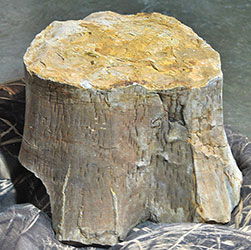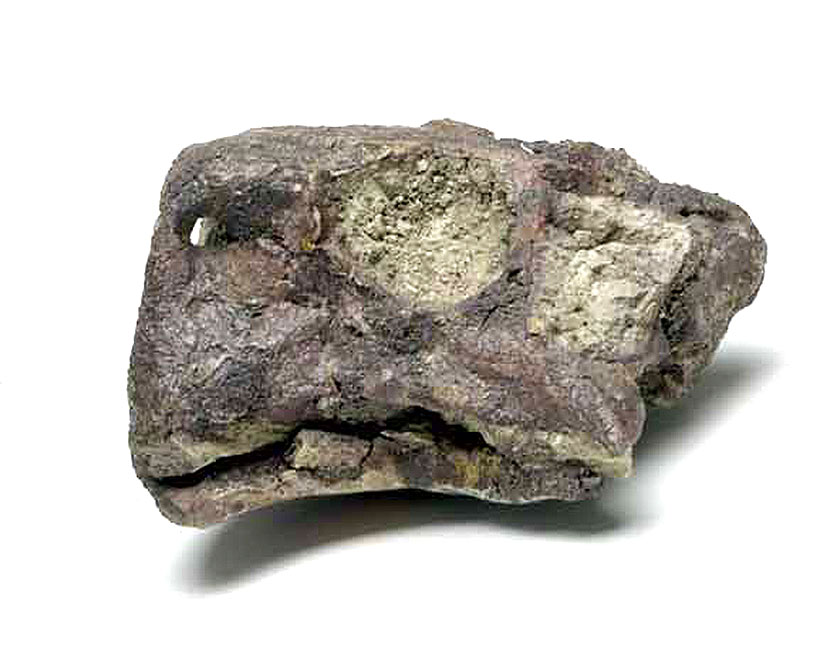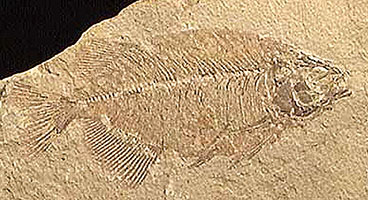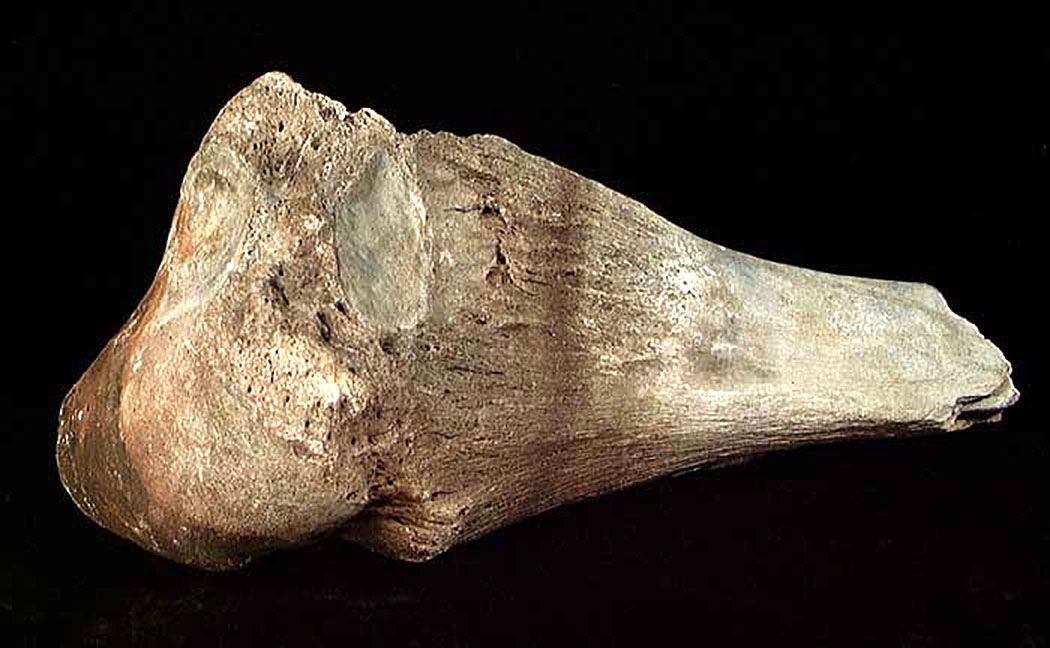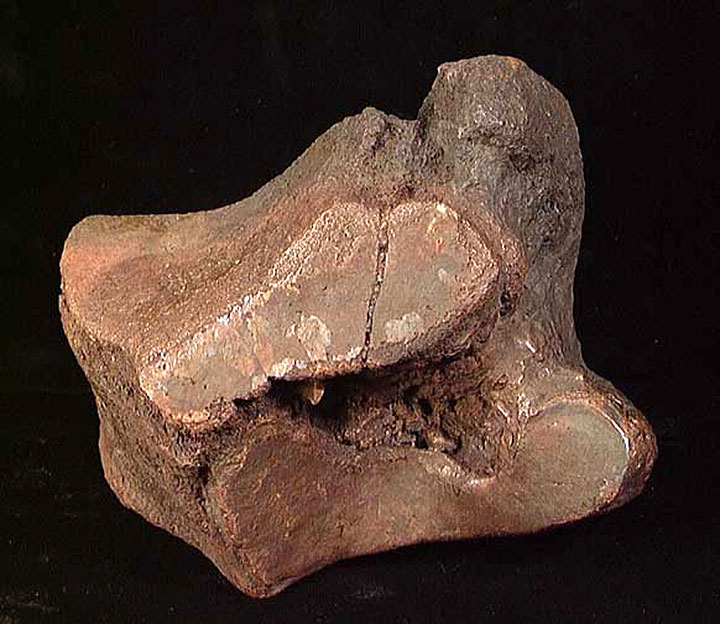Selected Wonders Of The Natural World
METEORITES DINOSAURS ANIMALS PLANTS MINERALS
METEORITES
MASSIVE 17 KILOGRAM CHONDRITE FROM THE FORMATION OF THE SOLAR SYSTEM 11618. HUGE CHONDRITE METEORITE, North Africa, Sahara Desert, 4.56 billion years BP. Most probably from the NWA (North West Africa) 869 fall. 17 kilo, 37 lbs. 10 x 8 x 8.5 inches. A beautiful large and complete unbroken example with ~95% good fusion crust with some desert patina deposits. With a number of old (they have Sahara sand grains wedged in them) stable cracks. With good regmaglypts covering 4 of the 5 sides. Exceptionally rare. Meteorites this large are almost unheard of on the market. A truly exceptional example.
There are several classes of meteorites, the main being stony iron and chondrites which contain less iron and nickel and more closely represent the original unmodified material of the solar system. Chondrites were formed by the accretion of particles of dust and grit present in the primitive Solar System which gave rise to asteroids over 4.55 billion years ago. These asteroid parent bodies of chondrites are (or were) small to medium-sized asteroids that were never part of any body large enough to undergo melting and planetary differentiation. Dating using 206Pb/204Pb gives an estimated age of 4,566.6 ± 1.0 billion years, matching ages for other chronometers. Prominent among the components present in chondrites are the enigmatic chondrules, millimeter-sized spherical objects that originated as freely floating, molten or partially molten droplets in space; most chondrules are rich in the silicate minerals olivine and pyroxene. Embedded in this dust are presolar grains, which predate the formation of our solar system and originated elsewhere in the galaxy. The chondrites have distinct texture, composition and mineralogy and their origin continues to be the object of some debate. Side B.
Provenance: A private American collection. Originally found in the Sahara desert.

11616. LARGE CHONDRITE METEORITE, Most probably from the NWA (North West Africa) 869 fall. 2 lbs. 14.9 oz. 6 x 4 x 3 inches. ~75% fusion crust. In excellent condition with no cracks. With a number of shallow regmaglypts. Side B. Side C.
Provenance: A private American collection. Originally found in the Sahara desert.

11617. LARGE CHONDRITE METEORITE, Most probably from the NWA (North West Africa) 869 fall. 3 lbs. 5.8 oz. 5 x 3.75 x 2.5 inches. ~95% fusion crust. In excellent condition with no cracks. With a number of shallow regmaglypts. Side B.
Provenance: A private American collection. Originally found in the Sahara desert.
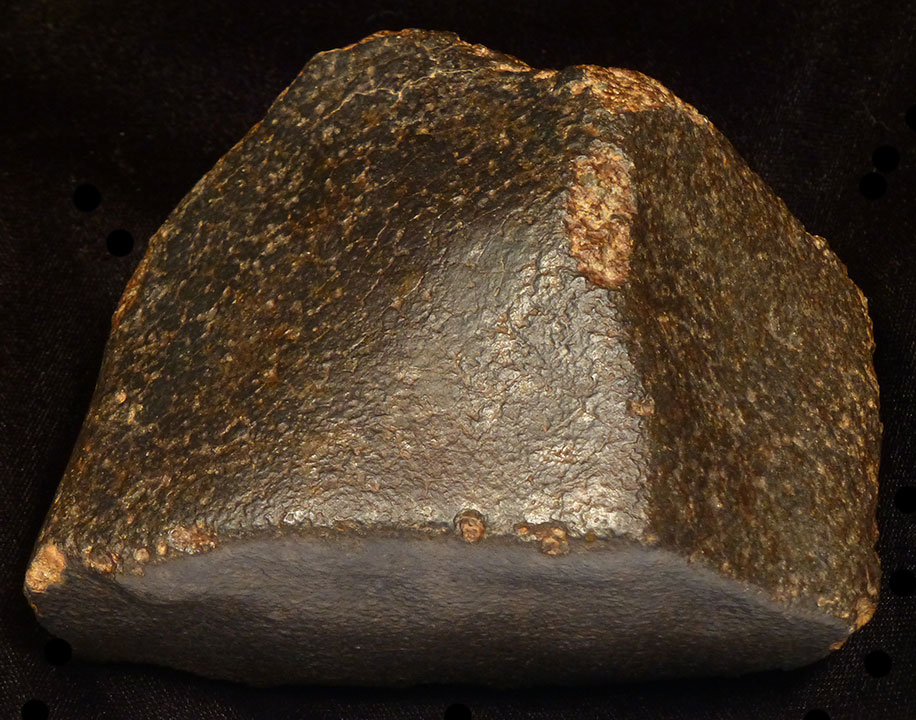
DINOSAUR FOSSILS
MAMMAL, FISH & BIRD FOSSILS
10009. RARE FOSSIL SKULL OF MEGALOCEROS, Megaloceros giganteus, Pleistocene. The skull was found in Bensheim Germany. Size of span from horn to horn is 70 cm (only parts of the horns are remaining, but still an impressive skull). Height is 23 cm. 28 x 13 x 11 inches. 13 lbs. Megaloceros was a large elk common in Europe. It sported perhaps the largest antler rack of any of the deer family as can be seen in the massive skull cap and antler bases of the current specimen and the model (not included). Repaired as to be expected with cracks at the repairs. Front View. Side view. Back view. Bottom view. Museum tag. Provenance: A private American collection. Acquired by the current owner from a German dealer, deaccessioned from a German natural history museum.
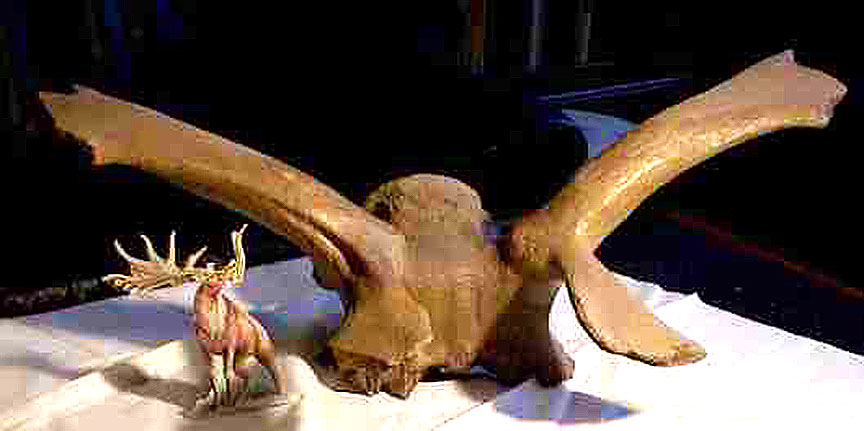
PLANT FOSSILS
HUGE AMBER NUGGET 12961. HUGE AMBER NUGGET. Sumatran amber, c. 20 million years BP. 24 kilograms, Measurements are 52 x 25 x 20 cm. The quality is excellent. This is a piece piece free of cracks and of a rich chocolate color. Amber nuggets of this side are incredibly rare and almost never appear on the market. The only other ones we are aware of are in museums, including the National Museum of Indonesia. Back view. Another view. Another view.
Provenance: The property of a European gentleman. Originally found in Western Sumatra at a depth of 40 m.
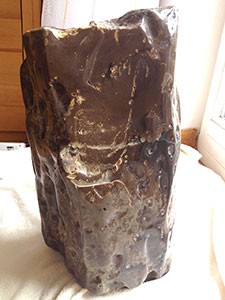
VERY RARE LARGE FOSSIL TREE TRUNK 12900. MASSIVE FOSSIL LEPIDODENDRON STUMP. Tennessee, Carboniferous Period, 300-450 million years BP. The large stump of pleasing grey and ochre color with a relatively smooth surface in which the vesicles typical of the species are clearly visible. Shown at the University of Tennessee where it was identified and confirmed authentic by them. Dimensions 18 1/2 inches across the top, larger at the bottom, 11 inches high, and 56 inches in circumference. Weight ~400 lbs. Extremely rare complete Lepidodendron stump. Enlargement. Another view. Another view. Another view.
Lepidondendrons were among the first large trees to appear on earth. These long extinct tall spore-bearing trees were related to modern club mosses. They stood in a dense, swampy forest 320 million years ago contemporaneous with the first appearance of land animals. These Giant Club Moss trees somewhat resembled modern palms crowned with spiky fronds. The green trunks were textured like alligator skin, giving them the name "scale bark" trees.
Provenance: A Tennessee fossil collection. Found on a privately owned farm in Campbell County, Tennessee.
